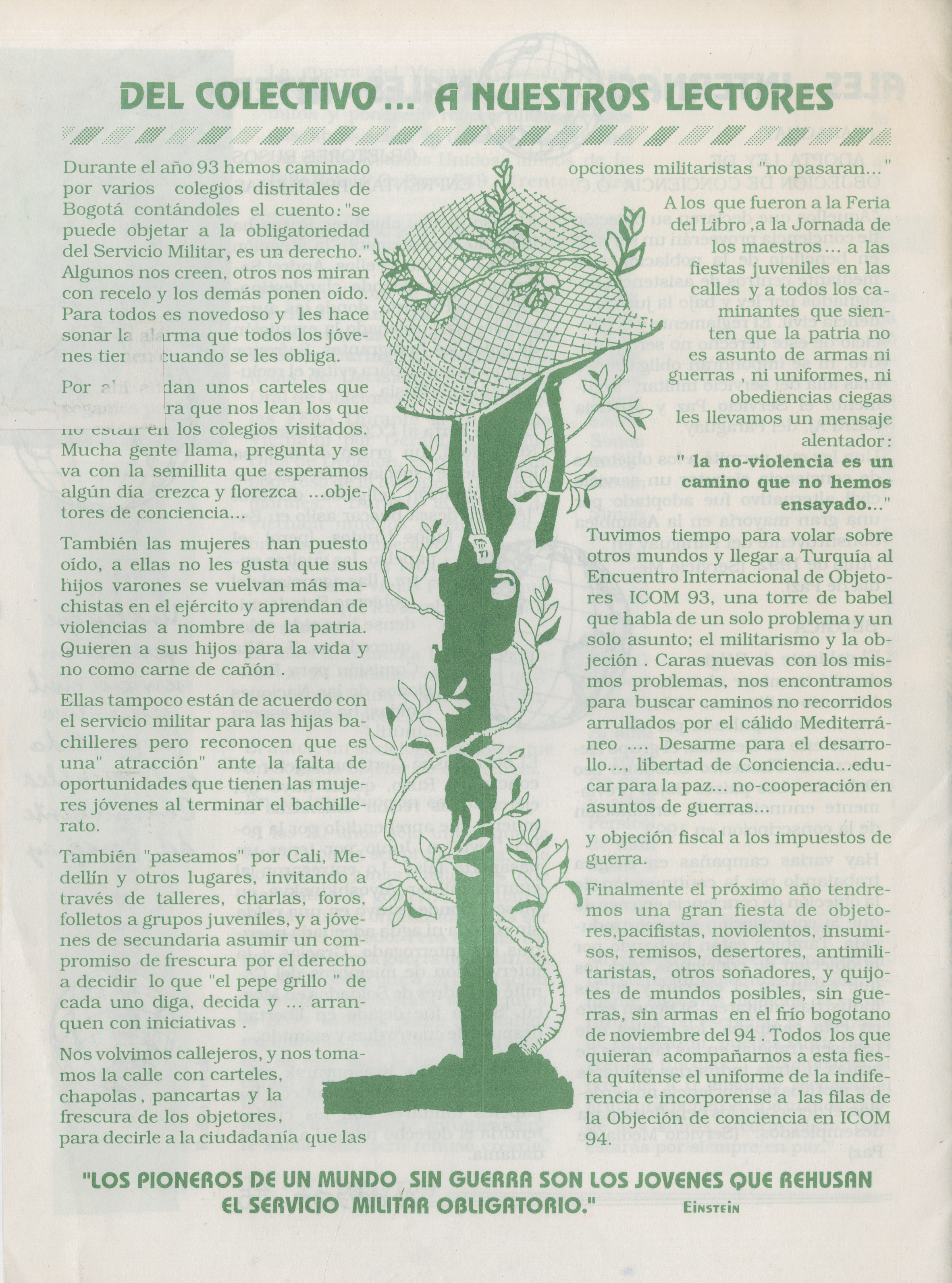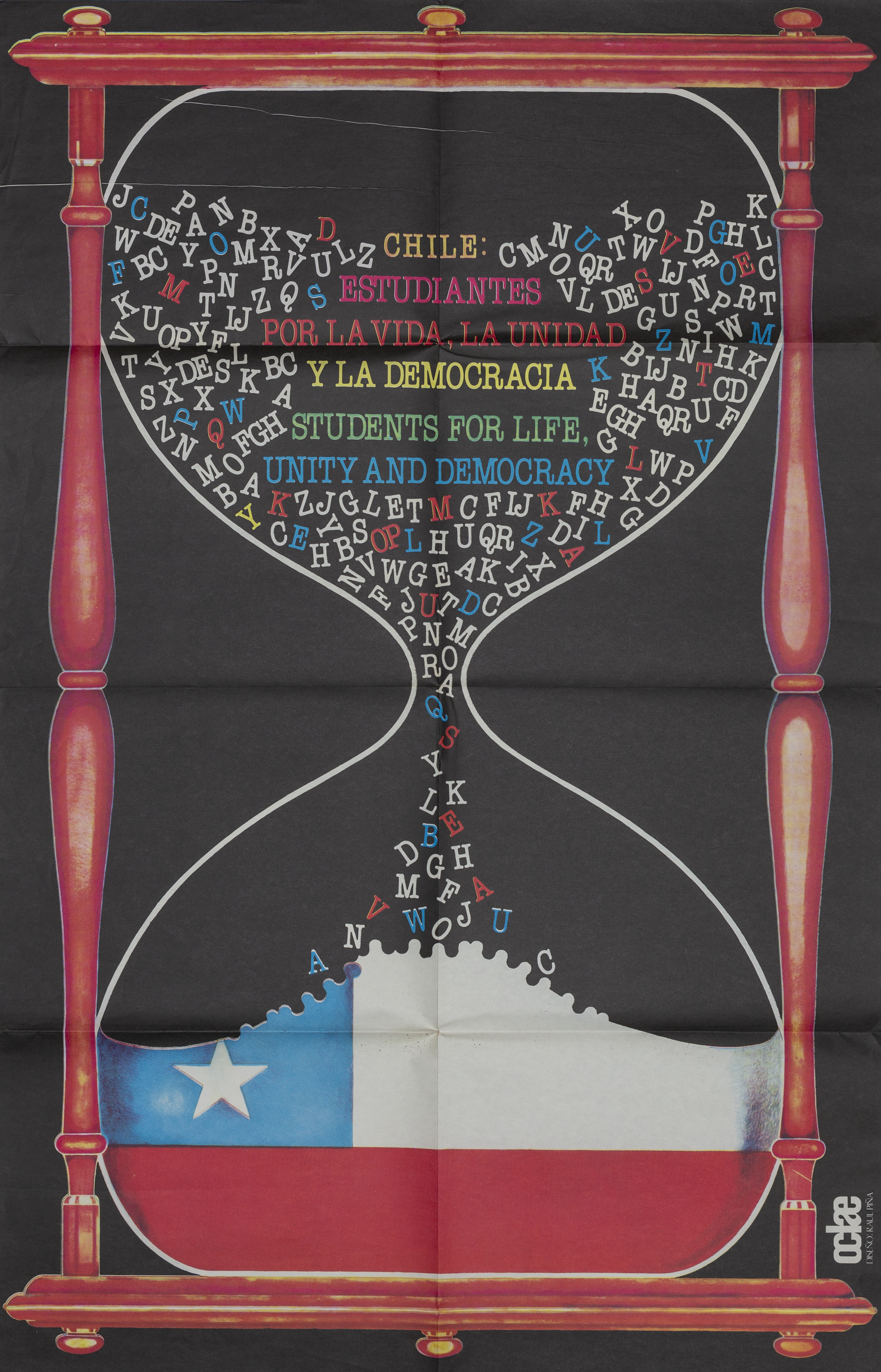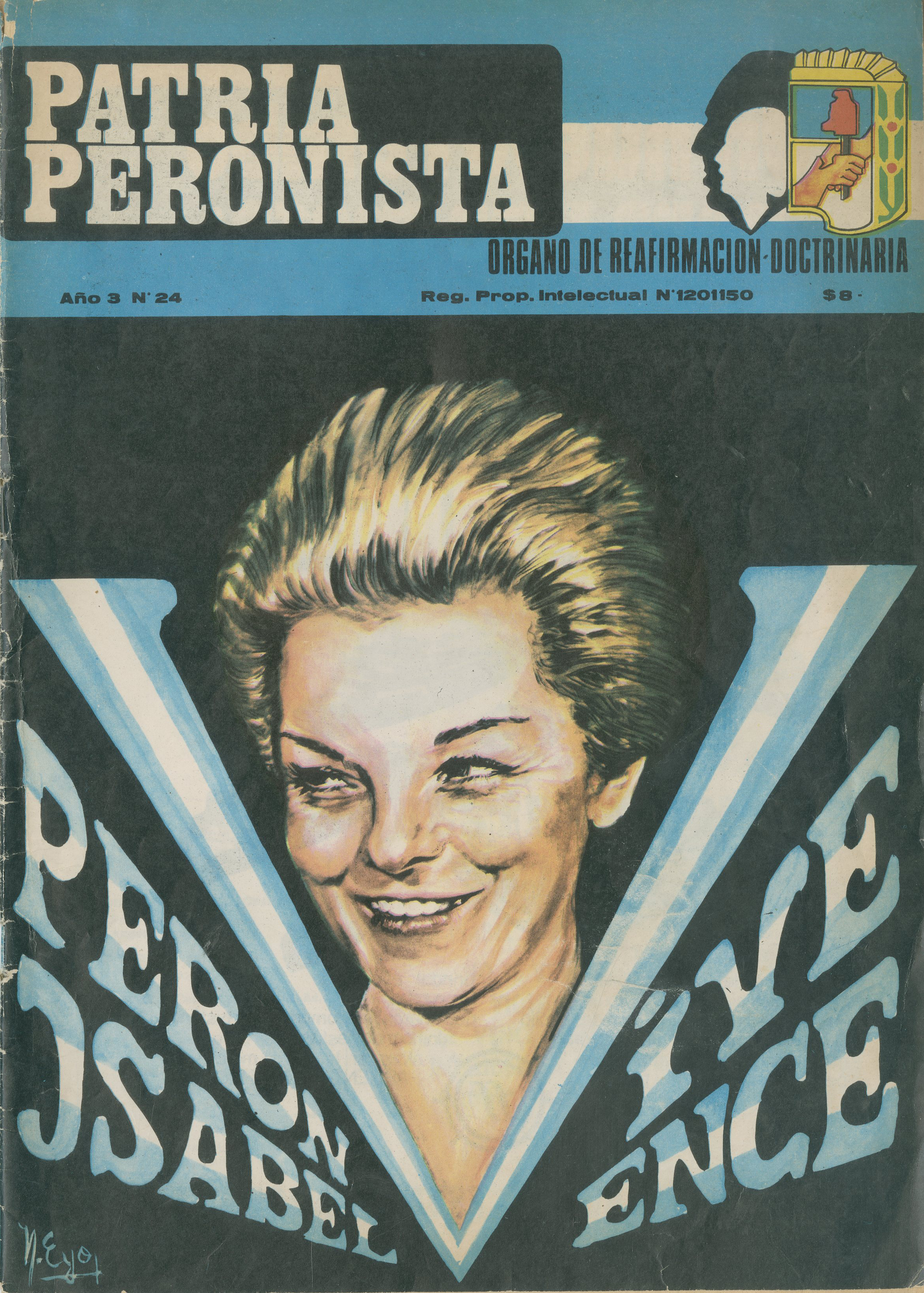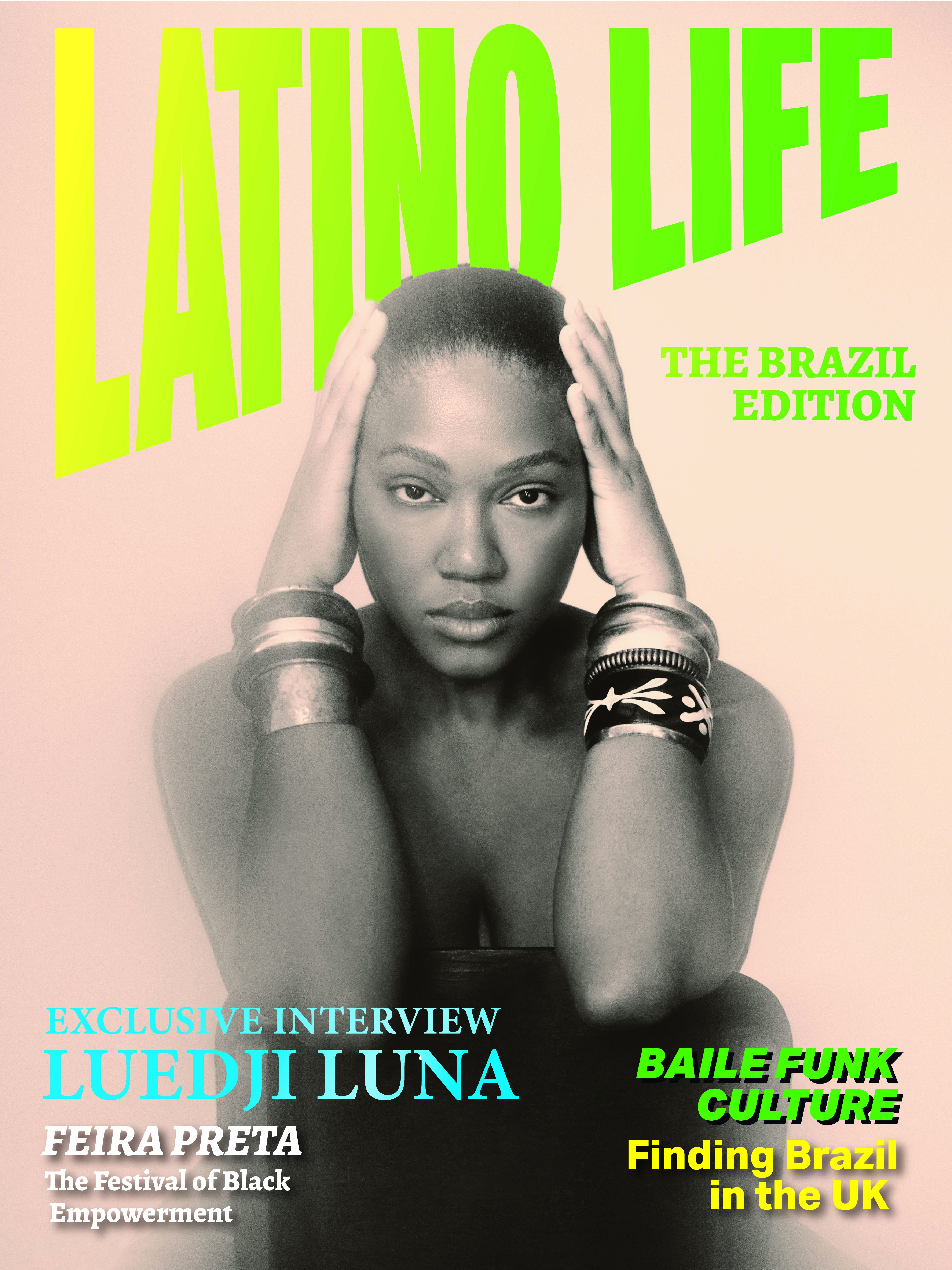I’m half-Colombian and I’ve always wanted to feel more connected and involved with my Latina heritage. When I was invited to take part in this project, I was astonished at the huge collection of political posters and pamphlets from Latin America; literally boxes and boxes filled with magazines, newspapers, posters, and reports from an impressive number of countries, all dealing with a wide variety of topics, all calling attention to the abuses occurring in each country.
As I looked at the images, I had more and more questions, and the importance of analysing the art through the eyes of everyday people became increasingly apparent to me. I was also surprised by the number of international documents, produced by Amnesty International, the Red Cross and other organisations from European countries like France, Spain, and the United Kingdom. The international dimension of the pamphlets and the themes they dealt with highlighted the importance of exhibiting this collection in London, an international city with multitudes of nationalities, ethnicities, and religions.
I wanted to stop and read everything in front of me. I spent hours looking at the thought-provoking documents, but my interest led me to focus on Colombia. I paid attention to how the colours, images, and symbols within the documents were used to transmit a message. One pamphlet titled “El Objector” (The Objector) was published entirely in green: the text, images, even the pages had a slight green tint to them. It was a pamphlet from conscientious objectors refusing military service on moral or religious grounds, not something I had been aware of in Colombia.
The pamphlets were produced in the 1990s when Colombia was going through a dual process of increased dialogue with guerrilla groups and intensifying governmental security policy, for which the Constitution of 1991 made military service compulsory for all men. In 1992, a State of Internal Commotion was declared, ending any pretence of democratic and inclusionary politics, and reverting to more authoritarian patterns. Conscientious objectors were resisting the batidas, a forced recruitment method in which young men were rounded up in public spaces to check their military status and, if not satisfactory, they faced legally being banned from employment or education.

The colour green, the colour of nature, was used as a direct opposition to militarism, representing new beginnings and growth. The helmet on top of a rifle covered in vines and leaves, representing both the power of life and ability to transform. The overall effect was to show a desire for change, to leave behind the weapons, let them be consumed and overrun by peace.
Another poster in the exhibit was from the Latin American and Caribbean Continental Organization of Students (OCLAE) depicting an hourglass and the Chilean flag. There is no publication date, but based on other posters designed by Raul Piña we estimate it was made between 1970-1988, the years of Pinochet’s dictatorship. The symbol of the hourglass combined with the Chilean flag indicates that time is running out for the student movement to unite and fight for a new Chile. The use of national colours combined with the bright yellow, pink, and green are a nod towards the vibrancy and youthfulness of those it is representing. The use of both Spanish and English in the poster speaks to the international nature of the organization.

In another intriguing artwork is the cover of Patria Peronista, an Argentine magazine. Juan Domingo Perón was President from 1946 to 1955, and then again from 1973-to 1974, his legacy dominating Argentine politics ever since through ‘Peronism,’ still in power today. After Perón died in 1973, his wife Isabel Perón became the first female president in Argentina and the world. This magazine cover aims to support Isabel’s presidency by linking her to the Peronist political party (Justicialist Party) and framing her as Juan Perón’s successor. The use of Argentina’s national colours (blue and white) further reinforces the idea of the nation’s natural leader and Peron’s natural successor… ‘Perón lives, Isabel wins!’ The intriguing logo on the upper right-hand corner, with the silhouette of Isabel’s face inside the larger silhouette of Juan Perón, invoking the imagery of Evita, Perón’s first wife, who became so popular she is still referred today. Or perhaps the image is of Evita? It is unclear, perhaps on purpose. Argentine presidents still invoke the image of Evita today.

A booklet cover produced by the ‘Revolutionary Workers’ Movement’ in Ecuador depicts violence through its use of red blood dripping on the cover and a stampede of people running. The text ‘Who would have imagined this…massacre’ pays homage to the Azucarera Tropical Americana factory massacre on the 18th of October 1977. A labour strike that turned violent the moment police started using firearms and gas canisters against the workers led to the death of 26 people. The booklet fights against official narratives promoted by the Ecuadorian government that hiding the truth.
These are just a few examples of the many posters on show. I hope is that the exhibit reaches wider audiences and motivates other academics, students, and institutions to start looking into their archives and investigating their importance in history and current socio-political contexts. The project brings to light overlooked historical sources, which I hope will inspire many discussions regarding Latin America’s diverse and fascinating history.
The Exhibition 'Thinking inside the Box' runs from 28 Match to 29th April at The Exchange http://www.brazilinstitute.org/thinkinginsidethebox


















